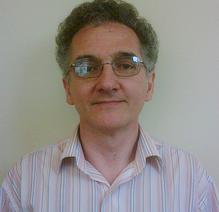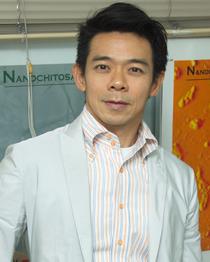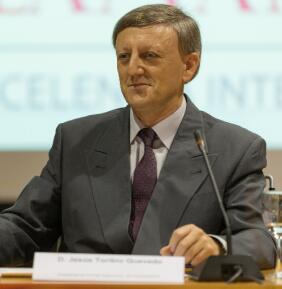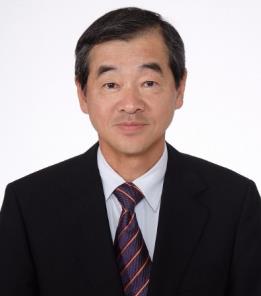
The 6th Global Conference on Polymer and Composite Materials (PCM 2019)

 |
Prof. Esteban Broitman, SKF Research & Technology Development, 3430 DT Nieuwegein, The Netherlands Esteban Broitman holds a Ph.D. in Physics from the University of Buenos Aires (Argentina), and a Docent (Habilitation) degree in Tribology from Linköping University (Sweden). He has been doing research and teaching at the University of Buenos Aires (Argentina), The College of William & Mary (USA), Carnegie Mellon University (USA), Linköping University (Sweden), and Invited Professor at University of Sao Pablo (Brazil), and the Chinese Academy of Sciences (CAS - China). He is presently a Senior Scientist in the area of Coatings at the SKF Research and Technology Development Center in Netherlands. His activities focus on the use of advanced surface engineering to control friction and wear at the macro-, micro-, and nano-scales of coatings like DLC, nanocomposites, and softer materials like soft metals and polymers. |
| Speech Title: Composite Coatings for Improved Rolling Bearing Life Abstract: During the last three decades, carbon-based composite coatings have enjoyed a growing interest in several industrial applications. By tuning the carbon sp3-to-sp2 atomic bonding ratio and by alloying the carbon with other elements, the researchers have been able to tailor unique physical, mechanical, and tribological composite properties in order to satisfy an increased technological demand. More... | |
 |
Prof. Suwabun Chirachanchai, Professor and Dean, The Petroleum and Petrochemical College (PPC), Chulalongkorn University, Thailand Dr. Suwabun Chirachanchai received his Ph.D. (Functional Polymers) from Graduate School of Engineering, Osaka University, Japan in 1995. He joined the Petroleum and Petrochemical College (PPC), Chulalongkorn University and started his projects on bioplastics, biopolymers, supramolecular chemistry, and fuel cell polymer membranes by focusing on molecular designs, syntheses, and structural characterization. More... |
|
Speech Title: Revisit Chitosan Modifications: A Simple Water-based System for Bio-related Applications Abstract: Chitosan (CS) is the only naturally abundant cationic polysaccharide which contains reactive hydroxyl and amino groups to perform bioactivity in addition to biodegradability, and biocompatibility and this leads to the potential bio-related applications. The main concern is that CS is insoluble in almost all solvents, except carboxylic acids, the chemical modifications for long years seem to be limited. The present work aims to show the simple CS functionalization to achieve the potential biomedical applications. More... |
|
 |
Prof. Peter W R Beaumont, Department of Engineering, University of Cambridge, UK Peter Beaumont was assistant professor in the School of Engineering at the University of California at Los Angeles (UCLA). He returned to England to take a position at the University of Cambridge. More... |
| Speech Title: Progress in the Micro-mechanics of Structural Composites Abstract: Since the discovery and public announcement of carbon fibre 50 years ago, there has been a plethora of papers published in a growing number of journals on a variety of aspects of composite material systems and design methods of composite structures. But remarkably few (in percentage terms) have provided indepth insight of composite material behaviour over a spectrum of industrial applications and public sectors. More... | |
 |
Prof. Jesús Toribio, Fracture & Structural Integrity Research Group (FSIRG), University of Salamanca (USAL), Spain Professor Jesús Toribio graduated in Civil Engineering in 1982 and then in Mathematics in 1986. In 1987 he was awarded his PhD in the Polytechnic University of Madrid (UPM) and turned into Associate Professor in that Institution. In 1992 he became Full Professor and Head of the Materials Science Department of the University of La Coruña (at the age of 32, thus being the youngest Full Professor in the area of Materials Science in Spain). In 2000 he moved to the University of Salamanca (USAL) where is currently Full Professor of Materials Science and Head of the Fracture and Structural Integrity Research Group (FSIRG) of that Institution. More... |
|
Speech Title: Cold drawn pearlitic steels as hierarchically structured nanocomposite materials for civil engineering construction: A tribute to Fray Luis de León, Miguel de Cervantes and Johann Sebastian Bach Abstract: Cold drawn pearlitic steels posses an inherent hierarchical microstructure consisting of pearlitic colonies (first microstructural level) and pearlite (ferrite/Fe and cementite/Fe3C) lamellae (second microstructural level), so that they can be considered as nano-composites from the materials science & engineering point of view. More... |
|
 |
Prof. Mitsuru Akashi, Graduate School of Frontier Biosciences, Osaka University, Japan M. Akashi has been the Specially Appointed Professor of Osaka University since April 1st 2015, after his retirement of the Professor of Graduate School of Engineering, Osaka University at March 31st 2015. He received his PhD degree in Engineering from Osaka University in 1978. He was a post-doc at NIH, Gerontology Research Center (USA) and the University of Waterloo (Canada) in 1978-1980. He joined the Department of Applied Chemistry and Chemical Engineering, Faculty of Engineering, Kagoshima University as an assistant Professor in 1981. More... |
|
Speech Title: How to challenge 3D-tissue engineering using polymer science Abstract: The surface control of substrates with nano/micrometer-sized polymer films are of considerable interest for both fundamental and applied studies in the biomedical field because of the required surface properties. The layer-by-layer (LbL) technique was discovered in 1991 by Decher and co-workers for the fabrication of polymer multilayers constructed mainly through electrostatic interaction. We have extended the scope and applicability of this LbL assembly by introducing molecularly regular conformations of polymers by employing for the first time weak interactions, such as van der Waals interaction. By utilizing the characteristic feature, we have applied the LbL system for the template polymerization of stereoregular polymers, stereoregular control of surface biological properties, drastic morphological control of biodegradable nanomaterials, and rapid fabrication of stereocomplex using an inkjet printer. More... |
|